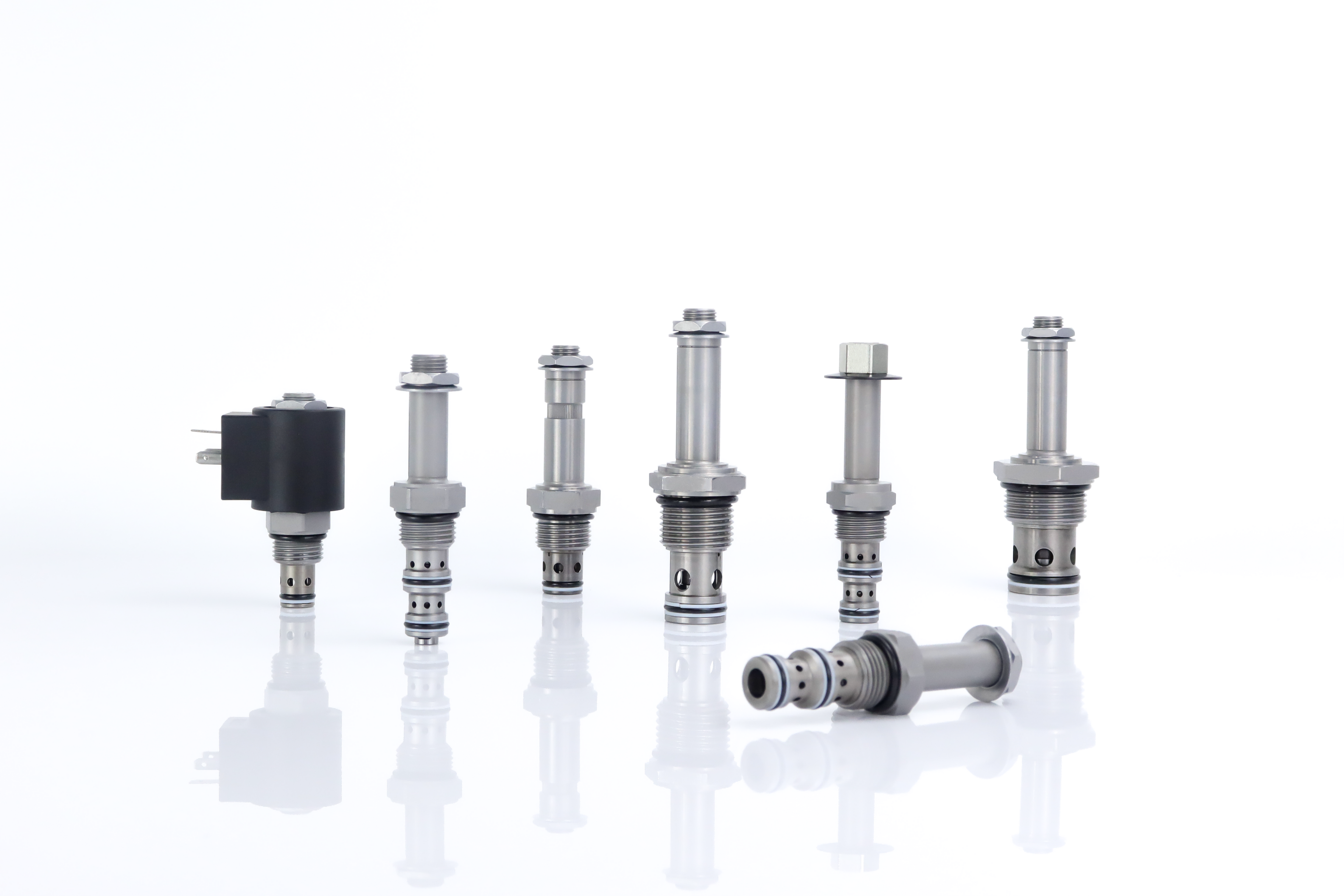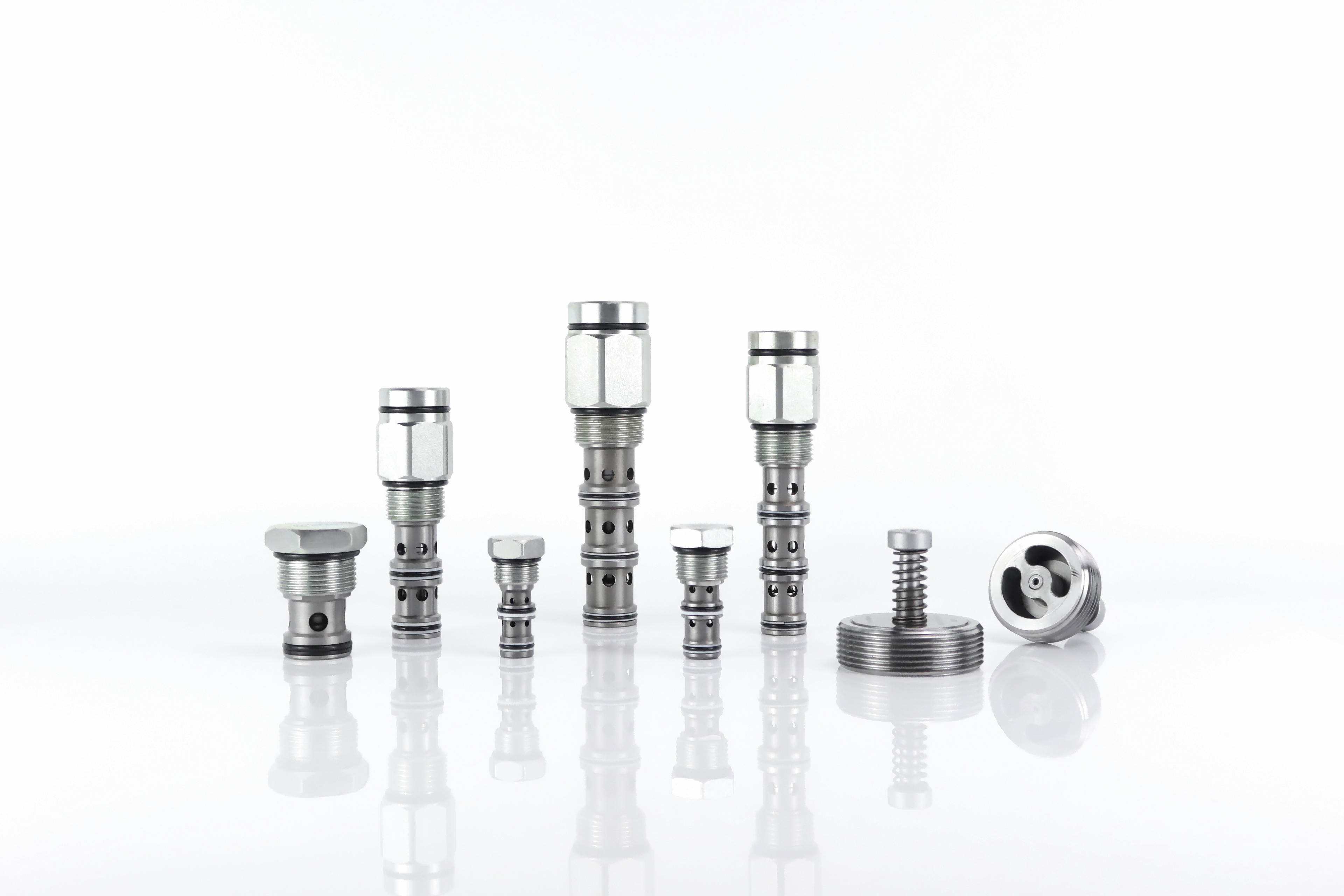Pilot-Operated Check Valve: The "Controlled Lock" and "Safety Guardian" in Hydraulic Systems
In the intricate world of hydraulic systems, there is a component that acts as both a "one-way gate" and a "controllable lock." It allows fluid to flow freely in one direction, can securely lock the fluid path with an external signal, and even proactively open a reverse channel when needed. This component is the Pilot-Operated Check Valve (POCV), a critical part that plays a key role in ensuring system safety and enabling precise control.
This article will provide an in-depth and easy-to-understand explanation of the working principle, core features, and classic application scenarios of the pilot-operated check valve.
I. What Is It? How Is It Different from a Standard Check Valve?
Simply put, a pilot-operated check valve can be thought of as an upgraded version of a standard check valve.
-
Standard Check Valve: Allows fluid to flow freely in only one direction (forward) and completely blocks flow in the reverse direction, like a "one-way gate."
-
Pilot-Operated Check Valve: Not only does it possess all the functions of a standard check valve, but it also has an additional external pilot port (X port). By supplying pressurized fluid to this pilot port, this "one-way gate" can be "unlocked" or forcibly opened, allowing reverse fluid flow.
This "controllable" feature transforms it from a passive flow-restricting component into an active control element, greatly expanding its functionality and application scenarios.
II. Core Structure: How Does It Work?
To understand how it works, let's first break down its internal structure. A typical pilot-operated check valve mainly consists of the following parts:
-
Valve Body: A robust housing that contains all the internal components and fluid passages.
-
Main Valve Poppet (or Ball): Usually a cone or ball, responsible for opening and closing the main fluid path. Its sealing performance determines the reliability of the lock.
-
Main Spring: Provides spring force to keep the main poppet normally closed.
-
Piston: Connected to the pilot port, it receives the external hydraulic signal and converts it into mechanical force.
-
Pilot Port (X Port): The interface for introducing external pilot pressure.
III. Working Principle: Explained Through Three States
Assuming port A of the pilot-operated check valve is connected to the fluid source and port B is connected to the actuator (e.g., a cylinder), we can analyze its operation through three working conditions.
State 1: Free Forward Flow (A → B)
When pressurized fluid enters from port A, the fluid pressure easily overcomes the weak force of the main spring and pushes the main poppet open. Fluid flows smoothly from port A to port B. At this time, there is no pressure at the pilot port X, and the piston does not move. This state is identical to how a standard check valve works.
State 2: Reliable Reverse Blocking (B → A)
When fluid attempts to flow in reverse from port B to port A (e.g., when a cylinder is compressed by a load, forcing fluid back), the fluid pressure combined with the force of the main spring pushes the main poppet tightly against its seat, creating a highly reliable seal that strictly cuts off the fluid path. Since the sealing surface usually employs a metal-to-cone seal, leakage is minimal. This state achieves the function of a Hydraulic Lock, firmly holding the actuator in its current position.
State 3: Pilot-Operated Reverse Flow (B → A)
This is the most crucial function of the pilot-operated check valve. When we need the actuator (e.g., the cylinder) to retract, we must allow fluid to flow from port B back to port A.
At this time, we introduce a stream of pressurized fluid to the pilot port (X port) via a simple directional control valve. This pressurized fluid pushes the piston downward. The mechanical force of the piston acts directly on the main poppet, forcibly pushing it open.
Once the main poppet is lifted off its seat, the passage between port B and port A is opened. Even if the pressure at port B is very high, the fluid can safely reverse flow back to the tank under the "protection" of the piston.
Simple Summary:
-
Without pilot pressure: It acts as a check valve (A→B open, B→A closed).
-
With pilot pressure: It allows flow in both directions.
IV. Why Is It Important? Core Advantages and Application Scenarios
Core Advantages:
-
Excellent Sealing: Minimal leakage in the reverse blocking state, providing far superior pressure holding and locking performance compared to locking achieved solely by a directional valve's center position.
-
Small Signal Controls Large Flow: A small solenoid valve can be used to control the X port, thereby managing a main circuit with a large diameter and high flow rate, making it economical and efficient.
-
Safety and Reliability: It is an indispensable safety component in applications like vertical cylinders or boom arms where leakage could pose serious risks.
Classic Application Scenarios:
-
Cylinder Pressure Holding and Locking (Most Common Application)
Scenario: Hydraulic presses, construction machinery (excavator arms), vertical injection molding machines, etc.
Function: After the cylinder reaches its position, the pilot-operated check valve is used to lock the fluid path to the cylinder's cap-end or rod-end side, preventing dangerous situations like cylinder drift or load dropping caused by internal leakage in the directional valve or pipe rupture. This enables long-term stable pressure holding and precise positioning. -
Used as a "Hydraulic Lock"
Two pilot-operated check valves are often combined into a double hydraulic lock module, installed on the fluid lines to both sides of a cylinder, achieving reliable bidirectional locking of the cylinder. -
Controlling Complex Circuits
In some complex hydraulic circuits that require specific sequence of operations or prevention of interference between actions, pilot-operated check valves can be used to control the sequence of circuit opening and closing, ensuring the system operates according to the designed process.
Conclusion
Thanks to its ingenious design, the pilot-operated check valve combines "passive" blocking with "active" control, perfectly addressing the core needs for safe locking and controlled release in hydraulic systems. It is not merely a functional component within a hydraulic system but also a "loyal guardian" ensuring equipment stability and operational safety. Understanding its working principle is a key step in designing and maintaining high-performance hydraulic systems.


